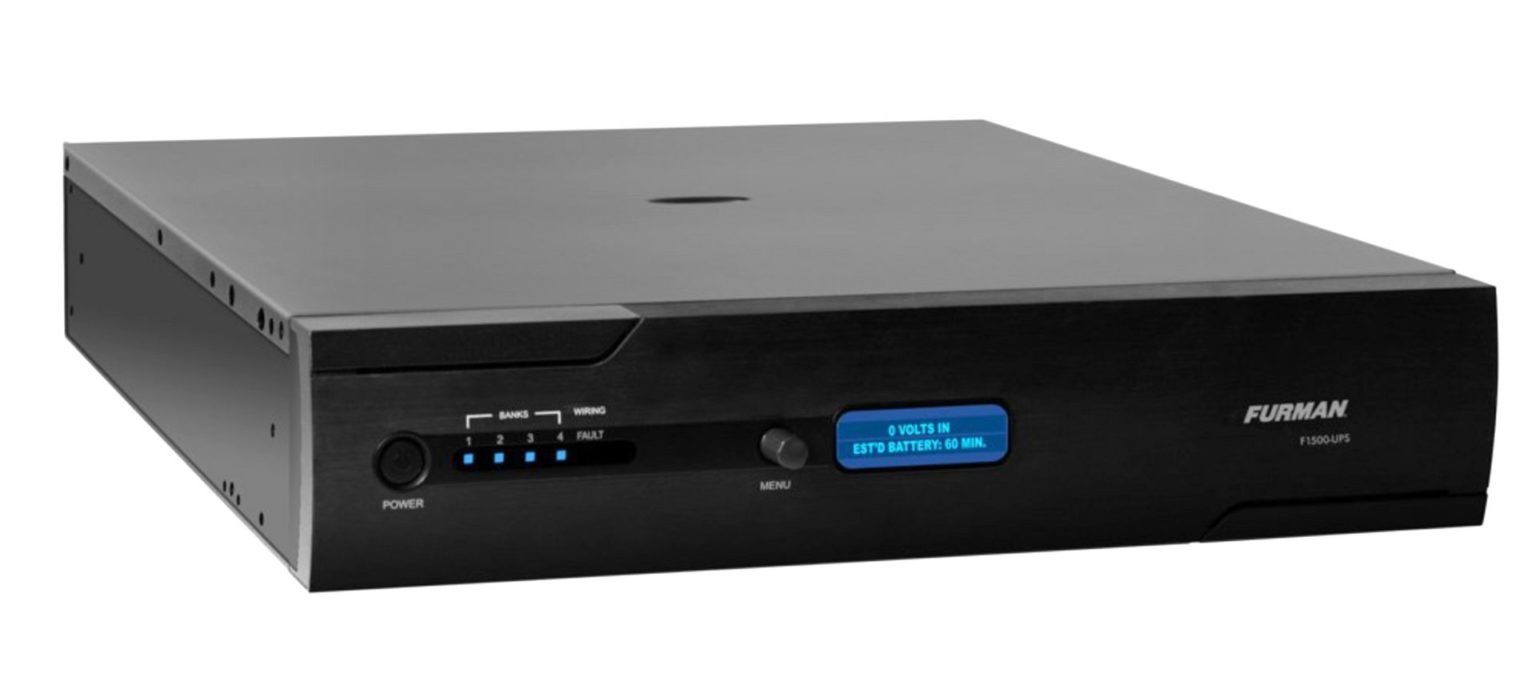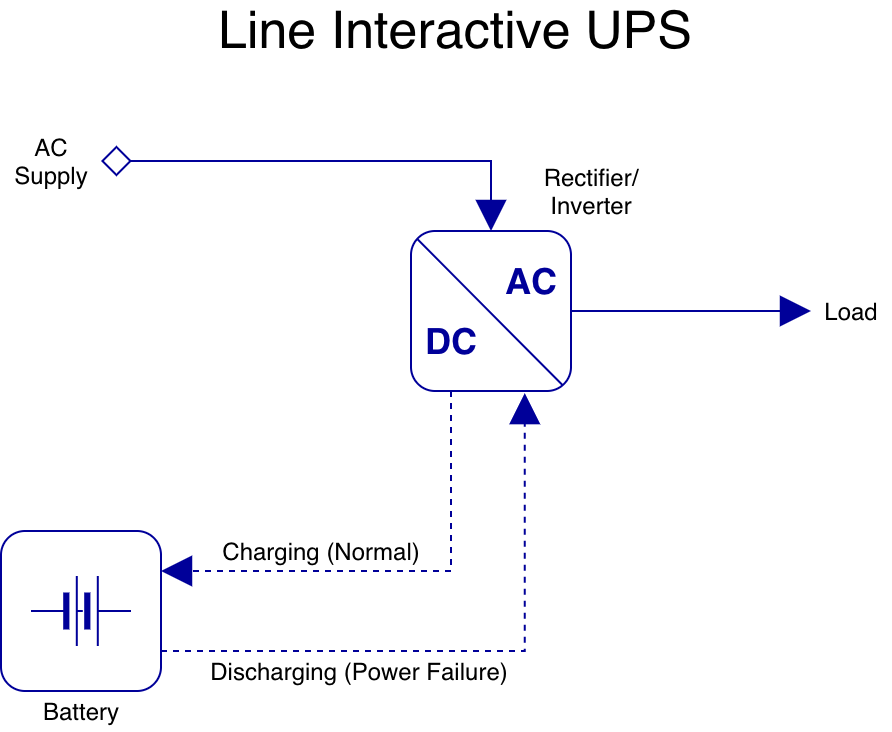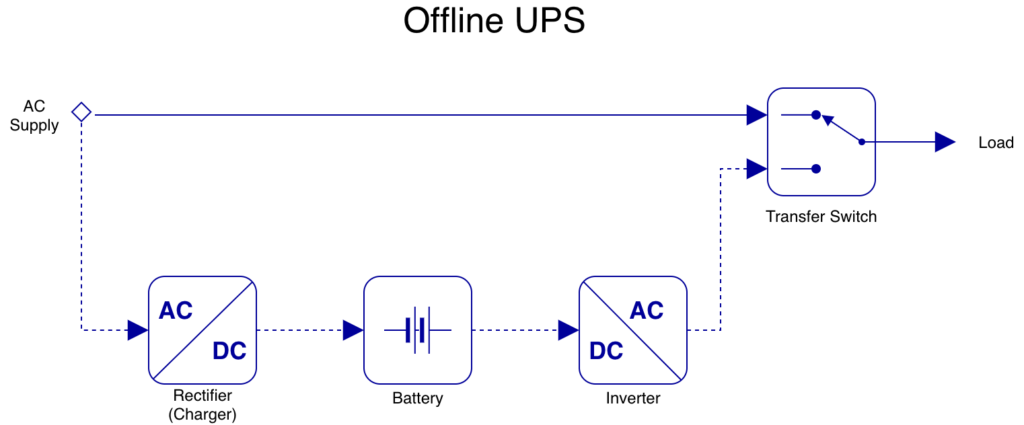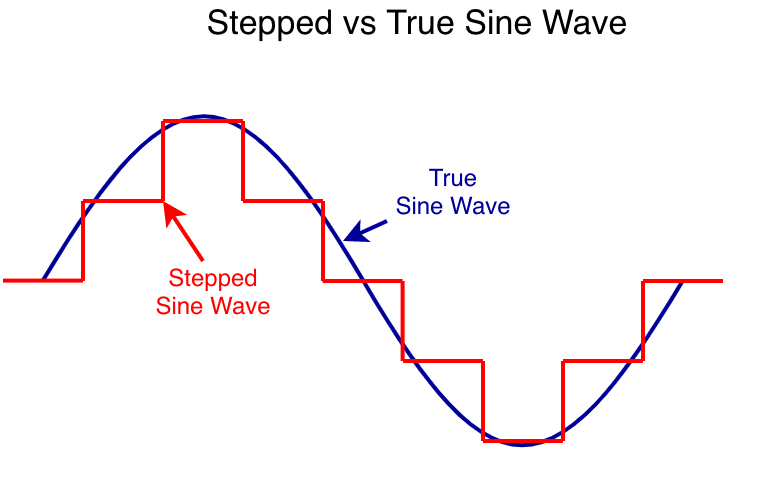News
10 Jun 2021
Tech Talk: Uninterruptible Power Supplies on Gigs

Subscribe to CX E-News
I’ll say it up front, I hate them
To me, it seems they cause more problems on the days you don’t need them (which is 99.9999% of the time) than on that day you actually need them. The power in the venue is probably down anyway so your show won’t be running due to the many other systems needed to keep a show and venue running and safe.
A case in point. I have a name brand, mid-tier line interactive UPS on my cloud streaming system which is permanently setup within my house. The voltage coming into the building is typically about 244 volts which is within specification. As part of my testing, I disconnect the supply to the UPS to ensure things still run as expected. The UPS promptly kicks in, but only supplies 230 volts, so my computers are suddenly being fed with 14 volts less. Despite this, they cope just fine and I am happy.
Test completed, I reconnect the supply to the UPS back in, and the UPS takes out the residual current breaker (RCD) to my whole house! That means if I were to actually have a blackout, yes the UPS would keep my gear running for a short period, but when the power supply was restored to the building, the UPS itself would take out the RCD, which takes out the entire power supply.
The UPS is supposed to solve problems, not create bigger ones! That particular UPS will be replaced.
As an aside, did you know that the nominal voltage in Australia according to the standard is 230 volts? I must admit that I did not. In 2000, Standards Australia issued a system Standard AS60038, with 230 V as the nominal voltage with a +10% to –6% variation at the point of supply.
That is, it can be as much as 253 V, or as low as to 216.2 V and still be within spec. However, the voltage is set by state regulation and for example, Western Australia is still yet to adopt the standard, so the nominal voltage is still 240 volts in that state.
Despite their challenges, UPS do have a role. Power outages often only last for seconds, and brown outs, where the voltage temporarily drops, can be fairly common. Our friends in South Australia can tell us all about unreliable power. Therefore, it makes sense to put a UPS on equipment that requires booting up, or does not save state should the power go out, even briefly.
Examples include digital sound mixers, lighting desks, routers, switches, computers that are mains powered only as well as projectors that take some time to power up. I do not put them on laptops because they have their own batteries anyway.
Power Conditioning – I reckon power conditioning is rarely needed. When someone talks of “sensitive electronics”, they are not talking of modern day power supplies. It is 2021 and power supplies are dead easy to design and build with a stable output irrespective of what voltage is fed into them. As a matter of fact, you routinely see power supplies designed to operate with input voltages ranging between 100 and 250 volts. A voltage fluctuation of say 30 volts is not going to upset it in the slightest. Manufacturers claim that power conditioners can protect sensitive loads by smoothing out voltage fluctuations such as spikes, transients and electrical noise. I say that standard power supply designs can do this anyway.
In my career, I have only once come across a situation where the power needed stabilising. Our company installed a multimedia display at Regatta Point one the shore of Lake Burley Griffin in Canberra. The system was based on the now superseded Dataton Trax equipment. For reasons we could not understand, the system would hang very, very occasionally and for weeks we could not work out why as there seemed to be no pattern that we could identify.
Finally, we realised that the problems occurred when the Captain Cook Fountain which was in the lake outside the exhibition, sprung to life. The fountain pushes 500 litres per second, at 260 kilometres per hour, up to 152 metres into the air. When operating, there is six tonnes of water in the air at any time. It has two huge electric motors and when they kicked in, the inrush current as they started caused a brief voltage sag which was enough to upset the Dataton Trax multimedia controllers.
The reason we did not identify a pattern earlier is because the fountain’s operation is dependent on wind strength and direction. Weather sensors with a computer automatically turned it on and off depending on whether the water spray would land on the nearby Commonwealth Avenue bridge, or on the foreshore. If either of those conditions were likely, or if the wind was too strong, it would not turn on, so its operation was quite random.
In that case, we solved the problem by installing not a power conditioner, but an online UPS.
An online UPS is the most expensive form of UPS. The term ‘online UPS’ has nothing to do with internet connectivity but fully online UPS power supply (often called a ‘true UPS’) refers to one that is constantly filtering, storing and delivering electrical flow, even when conditions are normal. That is, a “double conversion” method of accepting AC input, rectifying to DC for passing through the rechargeable battery, then inverting back to 230 V AC for powering the protected equipment.

Because the output is always being fed by the inverter off the batteries and DC supply, if the DC supply drops or fails (as a result of the AC supply), the output is not affected in the slightest because it was always driven from the battery anyway. This is the ultimate in power protection.
The step down from online is the line-interactive UPS. A line-interactive UPS maintains the inverter in line and redirects the battery’s DC current path from the normal charging mode to supplying current when power is lost.

In this smart design, the battery-to-AC power inverter is always connected to the output of the UPS. When the input AC power is normal, the inverter of the UPS is in reverse operation and provides battery charging. Once the input power fails, the transfer switch will open and the power will flow from the battery to the UPS output. This design offers additional filtering and yields reduced switching transients since the inverter is always on and connected to the output. This design is probably the sweet spot between performance and price.
The next step down from a line interactive UPS is an offline or standby UPS. It does exactly what you’d imagine from the name. Rather than constantly cycling, storing and converting power through to device, it idles until absolutely needed.

In practice, whenever the standby UPS detects that electricity flow from the wall socket is registering as normal, it is effectively bypassed. The instant it detects a problem – which is usually within five milliseconds, the offline UPS power supply switches over to its internal battery backup instead. My unit is one of these, which is why the output voltage dropped from 244 volts to 230 volts when it kicks in.
Offline UPS tend to be functional and much more cost-effective for most applications and are only really seen as unsuitable in very critical applications where any risk at all of data or hardware loss is unacceptable.
UPS are typically rated in VA, or volts amps as well as watts. A lot of you are thinking, hey volts amps is just watts! Not quite. Something called Power Factor comes into play.
In a purely resistive AC circuit such as a lamp or heater coil, voltage and current waveforms are in step (or in phase), changing polarity at the same instant in each cycle. All the power entering the load is consumed.
Where reactive loads are present, such as with capacitors or inductors, energy storage in the loads results in a phase difference between the current and voltage waveforms. During each cycle of the AC voltage, extra energy, in addition to any energy consumed in the load, is temporarily stored in the load as electric or magnetic fields and then returned to the power grid a fraction of the period later.
The actual power used by a device is stated in watts, but the power supplied, complete with its current and voltage out of phase, is stated in VA.
Devices containing resistive loads have a power factor of almost 1, so the VA and watts consumed is pretty much the same. But circuits containing inductive or capacitive loads (electric motors, transformers, lamp ballasts, and others) can have a power factor well below 1, for example 0.8.
Therefore, a 1000 watt ballast with a power factor of 0.8 needs a supply of 1,250 VA (1,000 watts divided by the power factor of 0.8 equals 1,250 VA).
In a UPS (and the electric power grid for that matter), reactive loads cause a continuous ebb and flow of non-productive power. A circuit with a low power factor will use a greater amount of current to transfer a given quantity of real power than a circuit with a high power factor, which causes increased losses due to resistive heating lines, which requires the use of higher-rated conductors and transformers.
That is why the VA rating of a UPS will always be higher than the watts rating. In practice, you mainly care about the wattage specification as that is what you actually consume.
The batteries within a UPS are obviously low voltage DC, so the UPS needs to raise the voltage as well as modulate it into AC. This is done by an inverter within the UPS.
AC power supplied by the electricity provider is a sine wave, in Australia at 50 Hz, so the inverter needs to replicate that. It is cheaper to design a circuit that only simulates a sine wave and UPS that do this usually state something like “modified sine wave” or “stepped sine wave” in their specifications.

This is done by simply stepping the output voltage up and down in a rough facsimile of a sine wave. In my view, modified or stepped sine wave is not good enough because in some cases, the 50 Hz mains power cycle is used as a clock source for timing video circuits in particular. The correct choice is True Sine Wave which, as the name suggests, faithfully reproduces a proper waveform.
Battery capacity determines how long you can run when the power fails. Obviously, the more load you hang off a UPS, the more energy is consumed and the battery is depleted faster. That is why I only put devices that really need it. For example, laptops have their own battery so there is no point running them through a UPS.
When purchasing a UPS, you need to decide what is an acceptable battery run time for you. UPS running at their full load with Sealed Lead Acid batteries typically only have a short runtime on battery, around 10 minutes or less. Some UPS have Lithium batteries. Some have the ability to connect more batteries to increase that run time. Some have both which results in very long run times.
In conclusion, using a UPS successfully requires a careful assessment of your needs. Then you can decide which technology is required (online, line interactive or offline), and then an adequate rating for your load and required run time. As with all backups, it is critical that you test the system to ensure it works as you expect.
Subscribe
Published monthly since 1991, our famous AV industry magazine is free for download or pay for print. Subscribers also receive CX News, our free weekly email with the latest industry news and jobs.






